INVESTIGATION: Inside Gaya emirate in Kano where residents, cattle drink from the same well
By Elijah Akoji
It is shameful that we are discussing issues such as lack of water supply, how do we tell people that Gaya, an Emirate that has produced a Senator and a House of Representatives member among other prominent men, still drink water and cook with water from the well and not just that, we and our cattle drink from the same well. Aminu Mohammed a resident of Gamoji ward in Gaya LGA laments.
SOLACEBASE in this report, visited three communities in Gaya LGA where access to safe, drinking water has deluded residents, as their only source of water is the well which is also the source of water for their cattle.
It will only take you less than a minute the moment you enter into Gaya LGA either through Dutse or Kano road before you will begin to ask, water vendors roaming around looking for buyers and well surrounded by people drawing their own rope from inside the well.
Struggle is not a respecter of age or gender, everyone is struggling to fetch and take home before the water level drops by noon time.

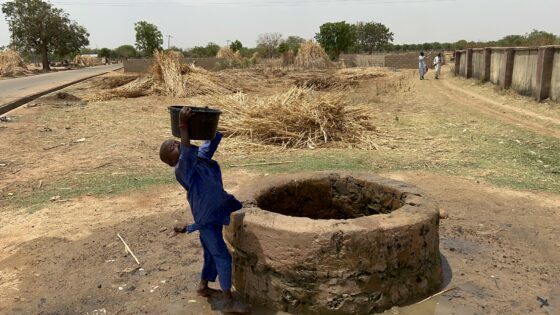
So there are communities that still drink and cook with water from an exposed well, how safe is this practice, and what will be the health condition of the people of these communities?
All of these are the questions that will run through your mind as you drive through Gaya main town.
Clean Water A Scarce Commodity in Gaya
Umaru Dan Gidan Salleh, a water vendor was seen pushing his truck through one of the popular gates inside Gaya main town, could not hold back his pain, sharing his worries he narrates how he has to cover a long distance just to fetch water from a well.
“We are faced with the problem of water, there are about 17 wells across Gaya main town where we all depend on for water, despite that it’s not from all the wells we can fetch from as some are even worse in color and taste as a result of the nature of the well, so most times we need to push our truck to a long distance before we can get water from at least a clean well, even though not as clean as it should be,” Umaru narrates to SOLACEBASE.
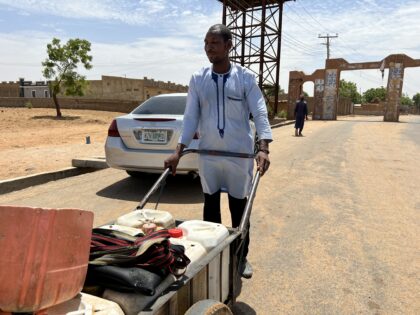
“It is difficult to see a hand pump borehole here in Gaya or a functional overhead tank that supplies water, that can only be in the palace or LGA secretariat, apart from these two places, every other person survives by drinking from a well,” he added.
Driving through Gaya main town, this reporter counted 22 wells, and debris of abandoned water tanks which are supposed to be source of clean water for the people of Gaya. However, each of the well visited are surrendered by mostly men of different age groups, old and young, each drawing its rope from inside the well and filling their kegs.
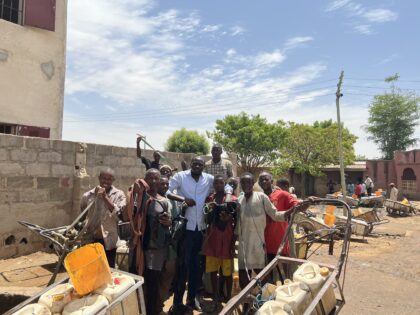
It became clear that the issue of water scarcity and access to clean and potable water is a long-time problem for the people of Gaya LGA as most of the wells look old like one dug for about 30 years ago.
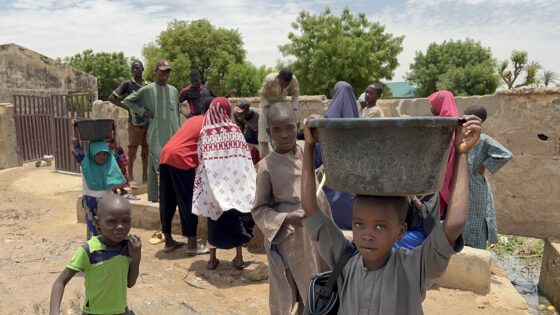
Tijjani Ibrahim, 40, narrates how Cholera remains a recurring sickness in his household, but grateful to God that it has not claimed any of his children or family member.
“It is inevitable to drink the kind of water we drink and not be a regular victim of Cholera, usually the outbreak even becomes worse during the rainy season, because of the practice of open defecation that it encourages,” Ibrahim said.
“I am 40 years as we speak, and all my life have been spent in Gaya except, I can be proud to tell you that I have drank water from a running tap for up to 7 times, and the last time I did was about 7 years ago when they built one solar hand pump which never lasted for even a week before it stopped.
Read Also: Investigation: How Rep member, agency abandoned communities, siphoned project funds in Benue State
“Rural residents are neglected people and I understand why it is so, because we are not as educated as those in the major urban cities so we are not a priority to our leaders, even our own elected representatives don’t even care about our well-being, so we have resolved to our fate until hope comes again,” Ibrahim added.
Kabir Imam, another water vendor from Garuwa community, who was seen at the well side, described how they sell the same well water at N20 per gallon for rural residents.
“Since we have to push this water truck from the well and move around town looking for buyers, all of these require energy, and you know we can’t do it for free, so for every gallon, we sell it at N20 naira and those who can afford to buy do that gladly.
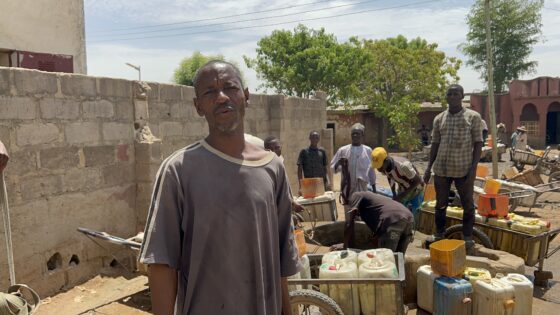
“The last functional borehole I am aware of was dug about 15 years ago, ever since then, we have been drinking and fetching from this well you can see around here, this, for now, has been our source of water, and there are many of this well across Gaya, Imam said.
Jamila Audu, the mother of 3 children, told SOLACEBASE that since she got married and relocated to Gaya about 18 years ago, that well water is what she knows and there has never been an alternative for her.
“Marriage is what brought me to Gaya, and ever since I came, I have never used water from a running tap for anything, my main source of water is the well some few meters away from my house, and no one has provided an alternative for us to use if they do we will be very glad,” Jamila said.

A 2022 report by the World Bank has shown that approximately 70 million Nigerians had no access to basic drinking water services and 114 million were without basic sanitation facilities in 2021.
The report titled, ‘Global Water Security & Sanitation Partnership’ showed that access to pipe-borne water declined from 36 percent in 1990 to 11 percent in 2021.
Plans in Progress – RUWASA
Engineer Sani Muhammed the deputy director, Rural Water Supply narrates the government’s plans to provide water for affected communities, but could not provide details of the exact plans of the government towards resolving the lingering water scarcity in Gaya.
“Most allocation comes from the state government, and I can not tell for now what has been the primary cause of why Gaya community is lacking access to clean water, but I know there is a plan on ground by the government to provide rural communities with access to clean and potable water supply,” Sani said.
Open Deification a Common Practice.
While record reveals that Kano State is one of the states on the open deification list, In Gaya LGA residents revealed that the squirting method in the bush remains their only way out as they can not afford to have a toilet in their house due to lack of water.
Nura Ali had just finished easing himself in an open field a few distances away from one of the wells where residents fetch water, returning and feeling relieved, he described how easy it is for him to use the bush instead of scouting for water before going to the toilet.
“At home, you will need water before going to the toilet, but it is expensive to ease myself at home, so I find it very convenient going into the bush to ease myself whenever I am pressed,” Ali said.
It sounds strange seeing a woman following the ways of Ali, for easy convenience, but for Hajara Nura, she has no option but to also follow the lifestyle like every other person.
“It is no longer a hidden thing that we are using the bush for convenience, this is where we find ourselves now, we just hope it changes soon, as a woman, open defecation I was being told exposes me to so many risks, but for now this is the only way out,” Hajara said.
According to UNICEF, Water Sanitation and Hygiene (WASH) specialist, Bioye Ogunjobi, 47 million Nigerians still indulge in Open Defecation (OD) across the country, while 33 million use unimproved toilets. Out of this number, the North Central region has over 16 million people.
Ogunjobi further revealed that for Nigeria to be certified open defecation-free by 2025, It needs two million toilets annually, as the country currently delivers 160,000 improved toilets annually.
“The country needs to increase its toilet delivery rate if it must attain the Universal Basic Sanitation target by 2025.
“Only 11 of the 774 local government areas in Nigeria are free from the practice of open defecation,” he stated.
Right To Clean Water is For All
In 2010, the United Nations General Assembly, in a resolution, explicitly recognized the human rights to water and sanitation. Everyone has the right to sufficient, continuous, safe, acceptable, physically accessible, and affordable water for personal and domestic use. This has been affirmed by SDG 6.1 which calls for full coverage of safely managed drinking water by 2030.
Accessing potable water, however, poses a herculean task in many rural communities across Nigeria, hence communities where there are no boreholes and wells resort to streams and other unhygienic sources of water to meet their needs. The situation is more pronounced in slums and impoverished rural areas.
The World Bank reported in 2021 that 60 million Nigerians are without access to basic drinking water and 80 million people are without improved sanitation facilities.
Only a handful of communities in some of the rural settlements visited by this reporter are often served via a network of boreholes and mono-pump water schemes, constructed either by legislators, individuals, or NGOs. Majority rely on streams, often contaminated by animal and human wastes.
Water Scarcity Causes Disease And Death – Expert
Researchers have found that water scarcity is associated with diseases. Dr. Abubakar Sadik Idris, from the Department of Public Health Kaduna State Ministry of Health, listed Diarrhea, Typhoid, Hepatitis A, Cholera, Scabies, Schistosomiasis, and others as water-related diseases.
He said water-related diseases, caused by the unavailability of safe drinking water and the absence of proper sanitation facilities, are among the leading causes of death in the developing world.
He says cholera, an acute diarrhea infection caused by ingestion of food or water that has been contaminated with the bacterium Vibrio Cholera continues to be a global threat to public health.
According to the World Health Organization (WHO), an estimated 1.3 to 4.0 million cases of Cholera, and 21,000 to 143,000 deaths occur worldwide as a result of Cholera.
“Cholera is a highly virulent infection that can cause severe acute watery diarrhea which can lead to death within hours if left untreated,” Dr. Idris said. He added that the transmission of Cholera is closely associated with inadequate access to clean water and sanitation facilities.
Second to Cholera is Diarrheal disease, which Dr. Sadik says is usually spread through the consumption of contaminated food or water or from person to person due to poor hygiene. “And it can be prevented through safe drinking water, improved sanitation, and personal hygiene, especially hand washing with soap and water,” he added.
He explained that Typhoid fever, which is also transmitted through contaminated food or water, is a life-threatening infection caused by the bacterium Salmonella Typhi.
WHO estimated that 7,134 persons died worldwide from Hepatitis A in 2016. Dr. Sadik says Hepatitis A infection is higher in countries with inadequate availability of potable water supply, poor sanitary conditions, and hygiene practices.
Water scarcity is a global problem, with UNICEF stating that almost two-thirds (4 billion) of the world’s population experience severe water scarcity for at least one month each year and that half of the world’s population could be living in areas facing water scarcity by 2025.
It added that some 700 million people could be displaced by intense water scarcity by 2030 and by 2040, roughly 1 in 4 children worldwide will be living in areas of extremely high scarcity of clean potable water.
This SOLACEBASE publication is produced with support from the Wole Soyinka Centre for Investigative Journalism (WSCIJ) under the collaborative Media Engagement for Development, Inclusion, and Accountability Project (CMEDIA) funded by the MacArthur Foundation.

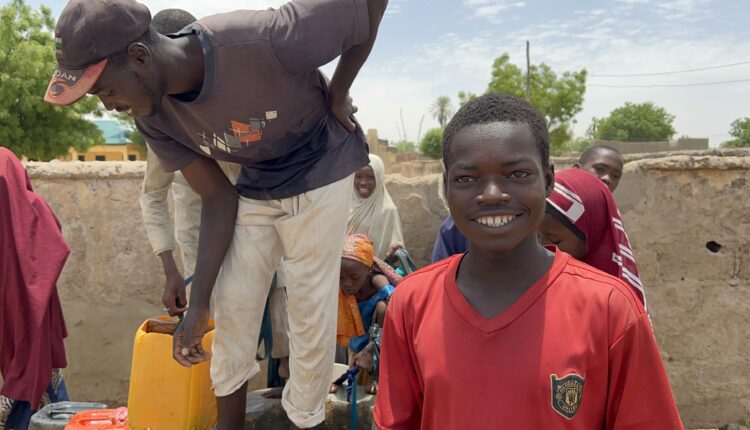

Comments are closed.